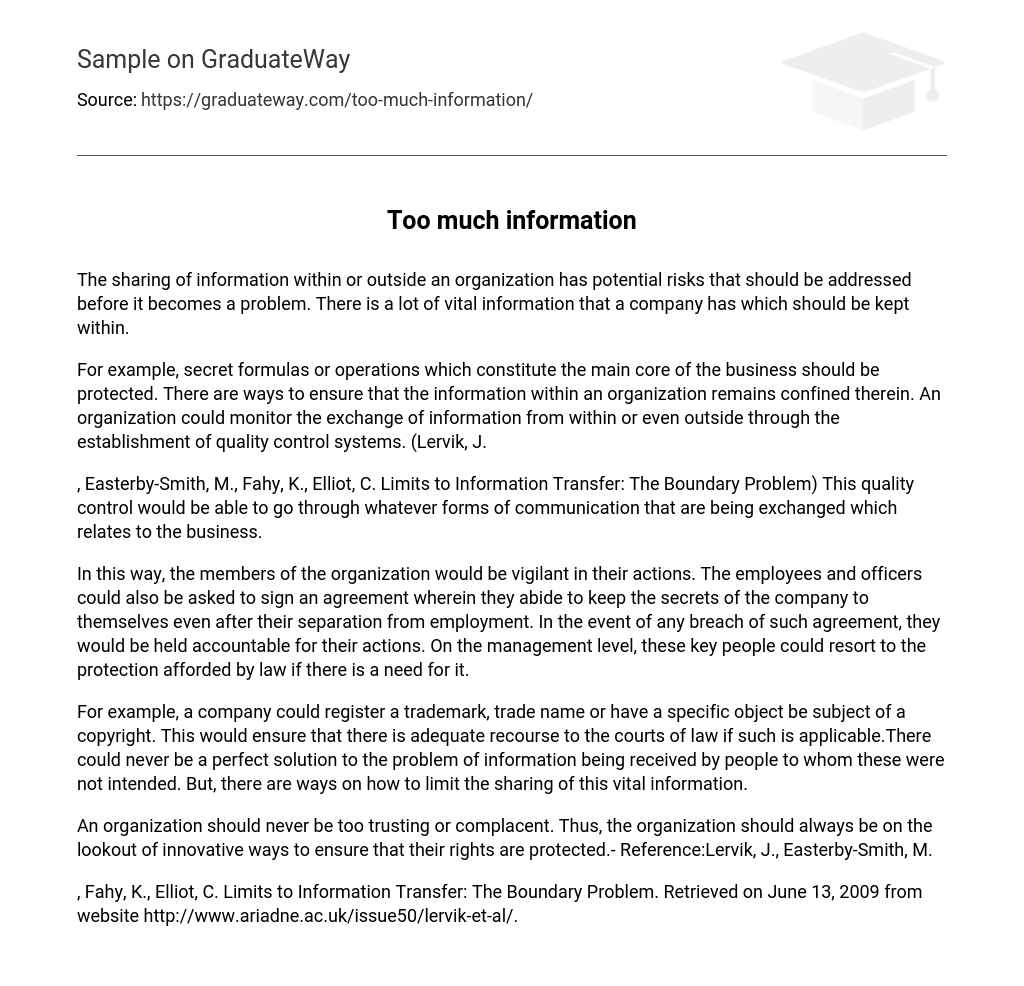The sharing of information within or outside an organization has potential risks that should be addressed before it becomes a problem. There is a lot of vital information that a company has which should be kept within.
For example, secret formulas or operations which constitute the main core of the business should be protected. There are ways to ensure that the information within an organization remains confined therein. An organization could monitor the exchange of information from within or even outside through the establishment of quality control systems. (Lervik, J.
, Easterby-Smith, M., Fahy, K., Elliot, C. Limits to Information Transfer: The Boundary Problem) This quality control would be able to go through whatever forms of communication that are being exchanged which relates to the business.
In this way, the members of the organization would be vigilant in their actions. The employees and officers could also be asked to sign an agreement wherein they abide to keep the secrets of the company to themselves even after their separation from employment. In the event of any breach of such agreement, they would be held accountable for their actions. On the management level, these key people could resort to the protection afforded by law if there is a need for it.
For example, a company could register a trademark, trade name or have a specific object be subject of a copyright. This would ensure that there is adequate recourse to the courts of law if such is applicable.There could never be a perfect solution to the problem of information being received by people to whom these were not intended. But, there are ways on how to limit the sharing of this vital information.
An organization should never be too trusting or complacent. Thus, the organization should always be on the lookout of innovative ways to ensure that their rights are protected.- Reference:Lervik, J., Easterby-Smith, M.
, Fahy, K., Elliot, C. Limits to Information Transfer: The Boundary Problem. Retrieved on June 13, 2009 from website http://www.ariadne.ac.uk/issue50/lervik-et-al/.





